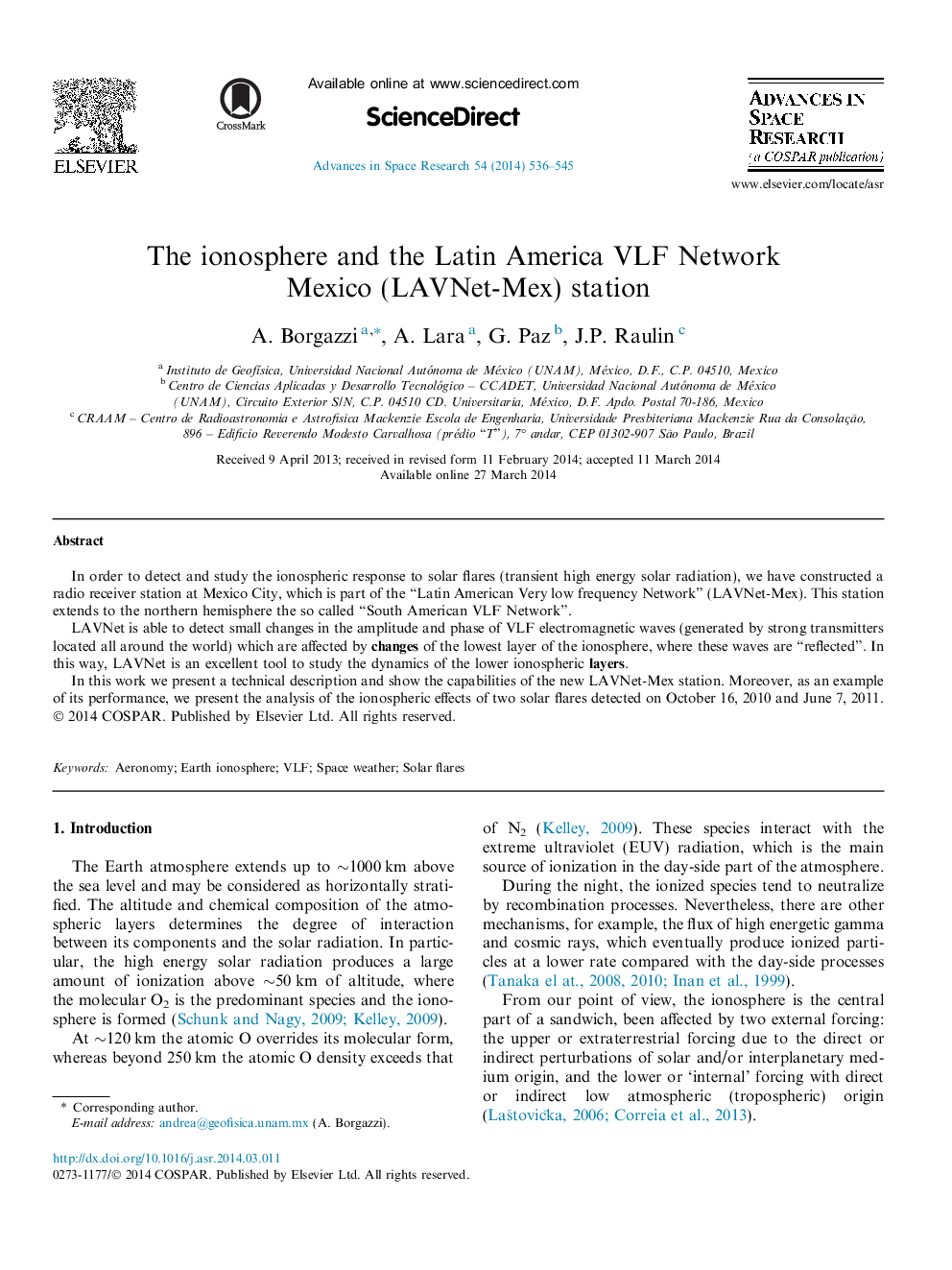| Article ID | Journal | Published Year | Pages | File Type |
|---|---|---|---|---|
| 1764919 | Advances in Space Research | 2014 | 10 Pages |
In order to detect and study the ionospheric response to solar flares (transient high energy solar radiation), we have constructed a radio receiver station at Mexico City, which is part of the “Latin American Very low frequency Network” (LAVNet-Mex). This station extends to the northern hemisphere the so called “South American VLF Network”.LAVNet is able to detect small changes in the amplitude and phase of VLF electromagnetic waves (generated by strong transmitters located all around the world) which are affected by changes of the lowest layer of the ionosphere, where these waves are “reflected”. In this way, LAVNet is an excellent tool to study the dynamics of the lower ionospheric layers.In this work we present a technical description and show the capabilities of the new LAVNet-Mex station. Moreover, as an example of its performance, we present the analysis of the ionospheric effects of two solar flares detected on October 16, 2010 and June 7, 2011.
